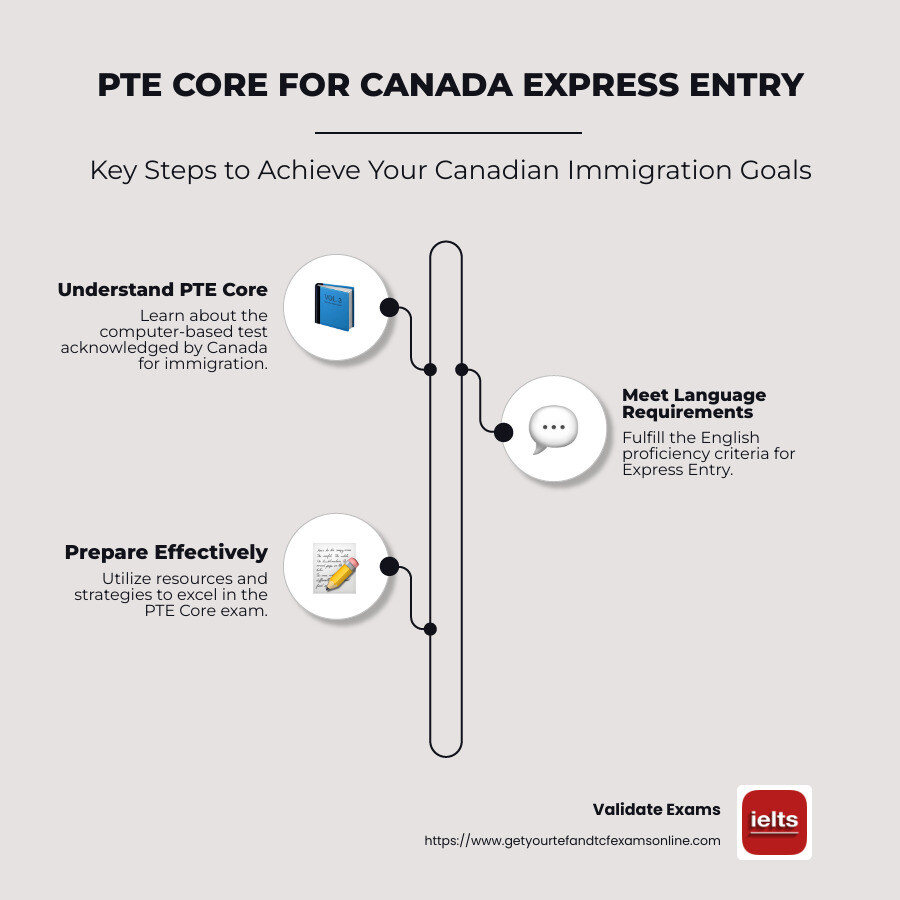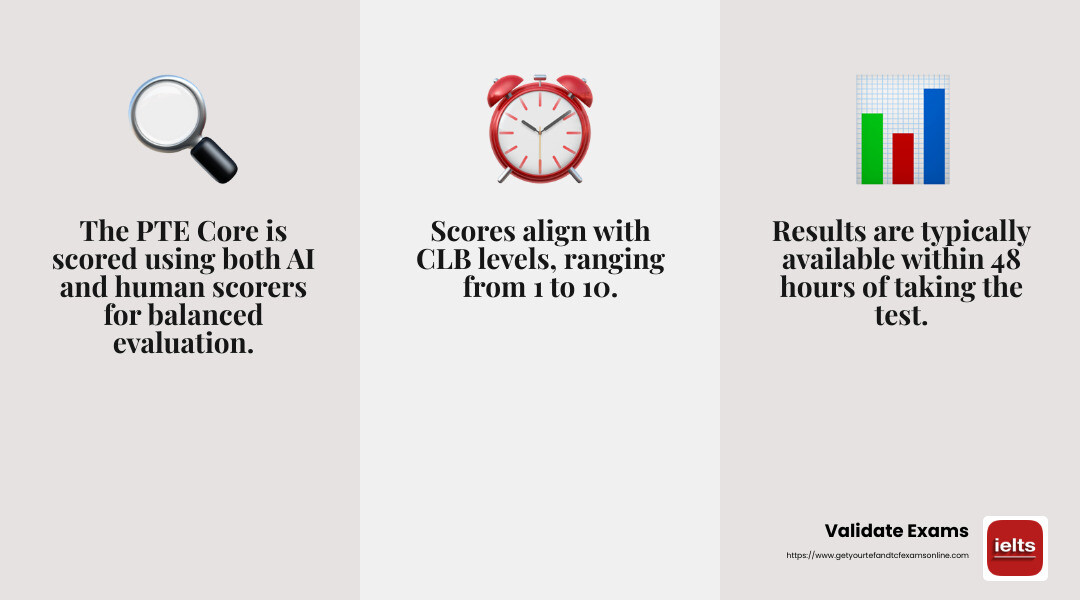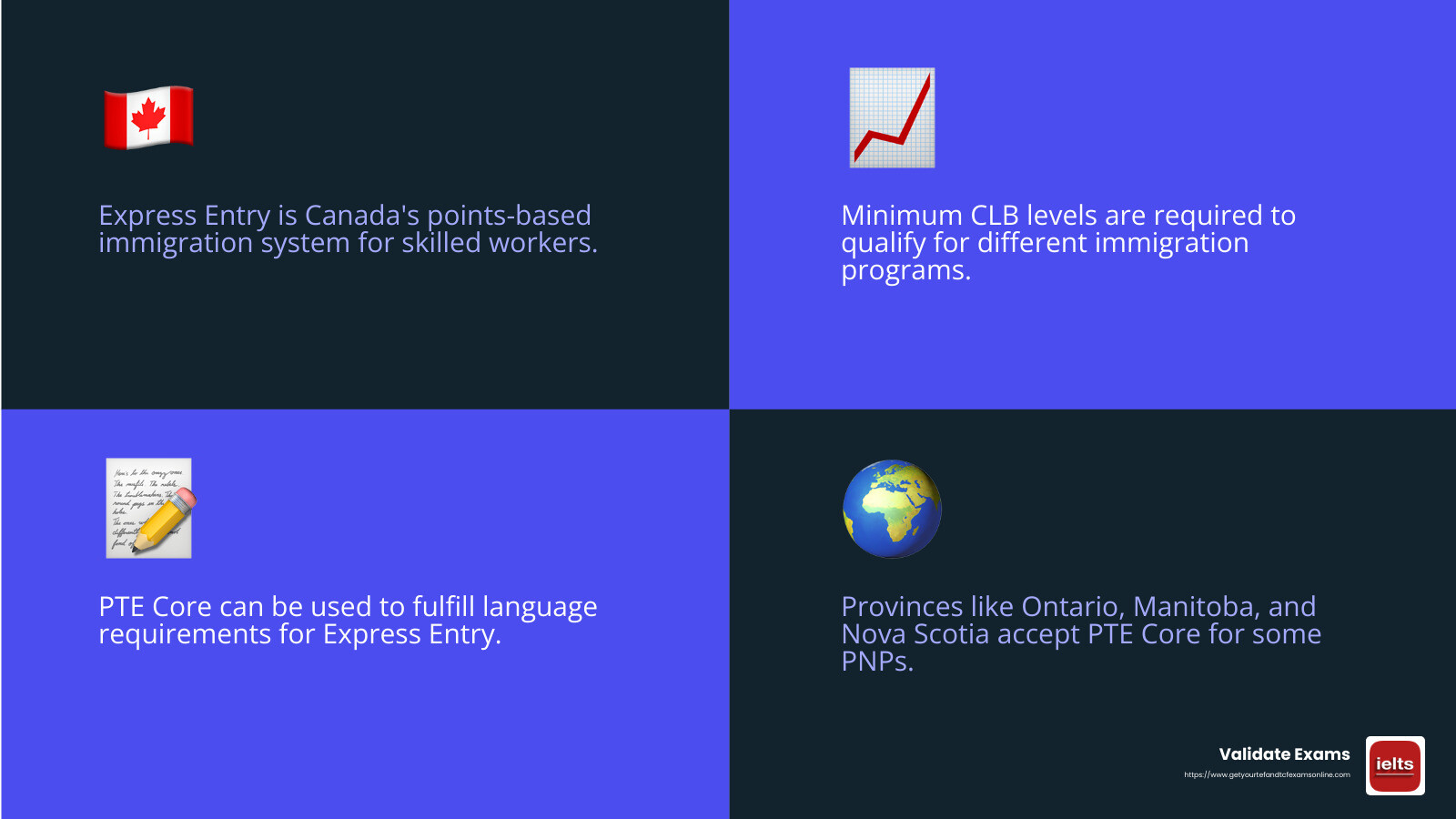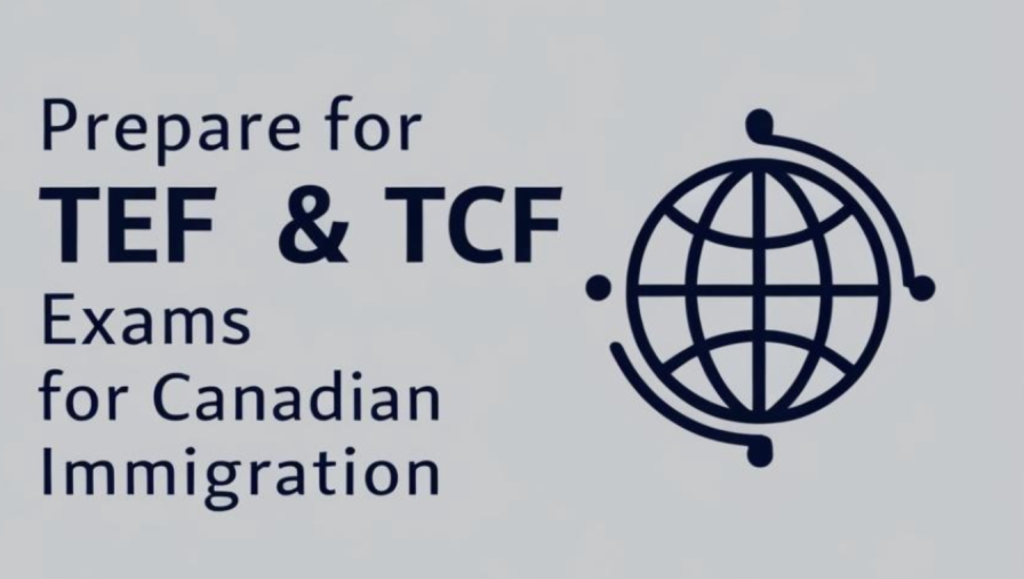PTE for Canada Express Entry: Top Guide in 2025
PTE for Canada Express Entry is a crucial pathway for many aspiring immigrants looking to make Canada their new home. It facilitates entry into Canada’s Express Entry system by assessing English language proficiency, a key requirement for immigration. Here’s what you need to know at a glance:
- What is PTE Core? A computer-based test evaluating English language skills, recognized by Canada for immigration.
- Who is it for? Applicants for Canadian work permits, Express Entry, and immigration pathways other than the Student Direct Stream.
- Key Components: Speaking & Writing (50 mins), Reading (30 mins), Listening (30 mins).
- Why PTE Core? It’s advertised as faster, fairer, and simpler compared to other tests.
Open uping opportunities through PTE Core can make your Canadian dream a reality by showcasing your English ability to meet immigration requirements. Let’s explore how this test works, its format, and why it stands out for those eyeing a new life in Canada.
I’m Baddo Magical, an expert in simplifying complex topics like pte for canada express entry for individuals like yourself. From my extensive background with various language proficiency tests, I’ll guide you through making informed decisions on your path to Canadian immigration.

Glossary for pte for canada express entry:
Understanding the PTE Core Test
The Pearson Test of English (PTE) Core is a vital tool for anyone aiming to immigrate to Canada through the Express Entry system. This computer-based test evaluates your English language skills across three main areas: Speaking and Writing, Reading, and Listening. Let’s break down the test structure and scoring to help you understand what to expect.
Test Structure
1. Speaking and Writing
This section takes about 50 minutes and includes tasks like reading sentences aloud, repeating sentences, describing images, and writing an email. It assesses your ability to use English effectively in everyday situations, which is crucial for living and working in Canada.
2. Reading
The reading section lasts approximately 30 minutes. You’ll encounter tasks such as filling in the blanks, answering multiple-choice questions, and reordering paragraphs. This part tests your comprehension and ability to process written English, which is essential for navigating daily life and work in Canada.
3. Listening
The listening section also takes about 30 minutes. Tasks include summarizing spoken text, selecting missing words, and writing from dictation. Listening skills are key for effective communication in English-speaking environments.
Scoring and Results
The PTE Core is scored using a combination of AI and human scorers. This ensures a fair and balanced evaluation of your language skills. Your performance in each section is translated into a score chart that aligns with the Canadian Language Benchmark (CLB) levels, from 1 to 10.
Results Timeline
One of the advantages of the PTE Core is the quick turnaround time for results. Typically, you can expect to receive your scores within 48 hours of taking the test. This rapid feedback allows you to quickly proceed with your immigration application process.

The PTE Core’s format and scoring system make it a popular choice for those pursuing Canadian immigration through Express Entry. By understanding the test structure and preparing effectively, you can showcase your English proficiency and improve your chances of a successful application.
Next, we’ll dig into the eligibility and requirements for using the PTE Core in your Canadian immigration journey.
PTE for Canada Express Entry
Eligibility and Requirements
The Express Entry system is a popular pathway for skilled workers to immigrate to Canada. It’s a points-based system that evaluates candidates based on their skills, work experience, and language proficiency, among other factors. One of the key components of this system is the language requirement, which can now be fulfilled using the PTE Core exam.
Language Requirements and CLB Levels
To qualify for Express Entry, applicants must meet certain Canadian Language Benchmark (CLB) levels. These levels are used to assess your language proficiency in English. For instance, the Federal Skilled Worker Program (FSWP) requires a minimum of CLB 7 in all four language abilities: reading, writing, listening, and speaking.
Here’s how PTE Core scores map to CLB levels for the FSWP:
- Reading: CLB 7 requires a PTE Core score of 60–68.
- Writing: CLB 7 requires a PTE Core score of 69–78.
- Listening: CLB 7 requires a PTE Core score of 60–70.
- Speaking: CLB 7 requires a PTE Core score of 68–75.
For the Federal Skilled Trades Program (FSTP), the language requirements are slightly lower, with a minimum of CLB 5 for speaking and listening, and CLB 4 for reading and writing. This means:
- Reading: CLB 5 equates to a PTE score of 42–50.
- Writing: CLB 5 equates to a PTE score of 51–59.
- Listening: CLB 5 equates to a PTE score of 39–49.
- Speaking: CLB 5 equates to a PTE score of 51–58.
Economic Programs and Immigration Pathways
The PTE Core is accepted for various economic immigration programs, enhancing your opportunities to immigrate to Canada. These include:
- Express Entry categories: Including the Federal Skilled Worker Program, Federal Skilled Trades Program, and Canadian Experience Class.
- Provincial Nominee Programs (PNPs): Though not all PNPs accept PTE Core, provinces like Ontario, Manitoba, and Nova Scotia do.
- Other programs: Such as the Atlantic Immigration Program and Quebec Skilled Workers and Business Class.
It’s important to check the specific requirements of each program as they can vary.

In summary, the PTE Core offers a flexible and efficient way to meet the language requirements for Canada’s Express Entry. With a clear understanding of the CLB levels and minimum scores needed, you can strategically prepare for your immigration journey.
Next, we’ll explore how to prepare effectively for the PTE Core exam, ensuring you have the best chance of success.
Preparing for the PTE Core
Tips for Success
Getting ready for the PTE Core exam can seem like a big task, but with the right approach, you can ace it. Here are some practical tips to help you prepare effectively.
1. Choose the Right Test Center
The PTE Core exam is available at over 400 test centers in 117 countries. When selecting a test center, consider factors like location, availability, and your comfort level with the environment. It’s a good idea to visit the center beforehand to familiarize yourself with the setting. This can help reduce anxiety on the test day.
2. Use Online Materials and Practice Tests
Pearson provides a wealth of free online materials, including practice tests and study guides. These resources are designed to mimic the actual test environment, helping you get used to the format and types of questions. Make use of these materials to identify your strengths and areas that need improvement.
3. Develop Effective Study Strategies
Create a study plan that suits your schedule and learning style. Break down your study sessions into manageable chunks, focusing on one section of the test at a time. For instance, you might dedicate one week to mastering the speaking and writing section, then move on to reading and listening.
4. Manage Your Time Wisely
Time management is crucial during both preparation and the actual exam. Practice answering questions within the time limits to build your speed and accuracy. During the test, keep an eye on the clock, but don’t let it stress you out. Prioritize questions you find easier and come back to the tougher ones if time allows.
5. Leverage Additional Resources
Consider enrolling in a preparation course if you need extra guidance. These courses can provide structured learning and expert insights. Additionally, joining study groups can offer support and motivation, as well as opportunities to practice speaking with others.
6. Stay Relaxed and Confident
On the day of the exam, ensure you arrive at least 30 minutes early to allow time for check-in and to settle your nerves. Remember to bring your passport or Canadian Permanent Residence Card, as digital IDs are not accepted. Stay calm, trust your preparation, and approach each question with confidence.
By following these tips, you’ll be well-prepared to tackle the PTE Core exam and improve your chances of success in the pte for canada express entry process.
Next, we’ll address some frequently asked questions about the PTE Core and its role in Canadian immigration.
Frequently Asked Questions about PTE for Canada Express Entry
Is PTE accepted for all Canadian immigration programs?
No, the PTE Core is not accepted for all Canadian immigration programs. While it is approved for several economic immigration pathways like Express Entry and most Provincial Nominee Programs (PNPs), there are exceptions. For instance, the PTE Core is not accepted for the Student Direct Stream (SDS) for study permits. Additionally, as of October 2024, some provinces such as Alberta and British Columbia do not accept PTE Core results for their PNPs. It’s crucial to verify the specific requirements of the program you’re applying to, as acceptance can vary.
What are the PTE Core score requirements for Express Entry?
For the Express Entry system, your PTE Core scores are converted into Canadian Language Benchmark (CLB) levels. Here’s a quick breakdown of what you need:
- Federal Skilled Worker Program (FSWP): Requires at least CLB 7 in all four language abilities (reading, writing, listening, and speaking). This translates to PTE Core scores of 60–68 in reading, 69–78 in writing, 60–70 in listening, and 68–75 in speaking.
- Federal Skilled Trades Program (FSTP): Minimum requirement is CLB 5, which corresponds to PTE scores of 42–50 in reading, 51–59 in writing, 39–49 in listening, and 51–58 in speaking.
- Canadian Experience Class (CEC): For TEER 0 or TEER 1 jobs, you need CLB 7, which is the same as FSWP requirements. For TEER 2 or TEER 3 jobs, a minimum of CLB 5 suffices.
Meeting these scores is essential to qualify for points under the language criteria in the Express Entry system. Achieving higher scores can significantly boost your Comprehensive Ranking System (CRS) points, increasing your chances of receiving an Invitation to Apply (ITA) for permanent residence.
Next, we’ll explore more about preparing for the PTE Core and strategies to improve your test performance.
Conclusion
Navigating the path to Canadian immigration can be challenging, but it doesn’t have to be. At Validate Exams, we understand the importance of language proficiency in your journey. That’s why we offer a stress-free certification process for the Pearson Test of English (PTE) and other language exams.
With us, you can secure guaranteed scores without the traditional exam stress. Our unique service provides genuine and verifiable language proficiency certificates online, allowing you to bypass the usual problems. This means you can focus on planning your future in Canada without worrying about test day jitters.
Whether you’re aiming for Express Entry or any of the Provincial Nominee Programs that accept the PTE Core, our streamlined approach ensures you meet the language requirements efficiently. We are committed to helping you achieve your immigration dreams with confidence and ease.
Ready to take the next step? Explore our language certificate options for Canada and let us help you make Canada your new home.

